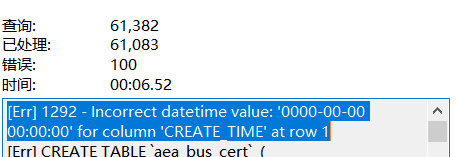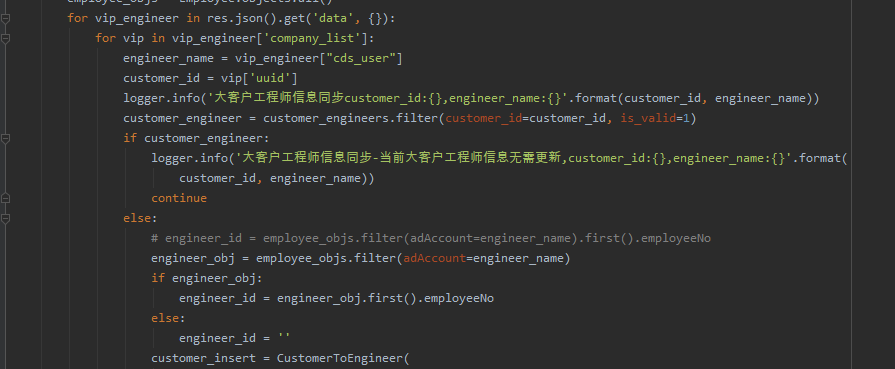Extm 是一个 MyBatis 的增强工具,在 MyBatis 的基础上只做增强不做改变,为简化开发、提高效率而生。使用Extm针对单表操作将不再手写SQL,从而提高开发效率。
Extm比当下流行的Mybatis Plus使用更加方便快捷。在使用Extm时,你将不再创建实例类,避免了书写数据实例类的烦恼。
安装教程
[安装extm] 在Web项目的pop.xml添加extm引用
<dependency> <groupId>com.github.meryl</groupId> <artifactId>extm</artifactId> <version>1.0.0</version> </dependency>修改SpringMVC项目配置文件
<bean id="sqlSessionFactory" class="com.extm.SqlSessionFactoryBeanEx"> <property name="dataSource" ref="dataSource"></property> <property name="configLocation" value="classpath:mybatis.cfg.xml"/> <property name="mapperLocations" value="classpath*:com/*/*/sql/*.xml"/> </bean>将 sqlSessionFactory的class修改为:“com.extm.SqlSessionFactoryBeanEx”
使用说明
extm 单表操作
获取数据库表对象
Db.table("表名");注:下文的针对表的增删改查都基于此方法返回的对象
Select语法(返回列表)
1.查询全表:
Db.table("user").select();2.指定返回字段:
Db.table("user").fields("id","name","password").select();3.Where条件:
(1) 不带参数的where条件: List data = Db.table("user").fields("id","name","password").where("id=1 AND name='meryl'").select(); (2) 带参数的where条件: 方式一、 Map map = new HashMap(); map.put("id","1"); map.put("name","meryl"); List data = Db.table("user").fields("id","name","password").where("id=#{id} And name=#{name}",map).select(); 方式二、 List data = Db.table("user").fields("id","name","password").where("id=#{id} And name=#{name}",1,"meryl").select();Find语法(返回一条数据)
返回第一条:
Db.table("user").find();指定返回字段:
Db.table("user").fields("id","name","password").find();指定查询条件:
3.1 用过参数限定(find参数与以下3.2 where参数一致): Map data = Db.table("user").fields("id","name","password").find("id=1 AND name='meryl'"); 3.2 Where条件: (1) 不带参数的where条件: Map data = Db.table("user").fields("id","name","password").where("id=1 AND name='meryl'").find(); (2) 带参数的where条件: 方式一、Map map = new HashMap(); map.put("id","1"); map.put("name","meryl"); Map data = Db.table("user").fields("id","name","password").where("id=#{id} And name=#{name}",map).find(); 方式二、Map data = Db.table("user").fields("id","name","password").where("id=#{id} And name=#{name}",1,"meryl").find();
Count语法(返回记录的条数)
与Find语法一致
Insert语法(插入数据)
返回执行成功的记录条数:
Map map = new HashMap(); map.put("name","meryl"); map.put("password","1"); Integer successCount= db("user").insert(map);返回当前插入的数据的键值
2.1 针对支持自增长的数据库(Mysql,SqlServer,Sqlite):
Map map = new HashMap(); map.put("name","meryl"); map.put("password","1"); Long id= db("user").insert(map,"id"); //第二个参数为主键名称,如果返回插入的主键值,这里必传2.2 针对不支持自增长的数据库(Oracle):
Map map = new HashMap(); map.put("name","meryl"); map.put("password","1"); Long id= db("user").insert(map,"id","seq_id"); //第二个参数为主键名称,第三参数为序列名称,如果返回插入的主键值,这里必传注:insert 第一个参数为:要插入的数据,类型可以为自定义实体类型或Map;第二个参数为:主键名称;第三个参数为:序列名称【针对Oracle等不支持自增主键的数据库】)
Update语法(更新数据)
更新全表
Map map = new HashMap(); map.put("name","meryl"); map.put("password","1"); Boolean isSuccess = Db.table("user").update(map);更新指定的记录
Map map = new HashMap(); map.put("name","meryl"); map.put("password","1"); Boolean isSuccess = Db.table("user").where("id=1").update(map);
Delete语法(删除数据)
删除全表
Boolean isSuccess = Db.table("user").delete();删除指定的记录
2.1 用过参数限定(delete参数与以下2.2 where参数一致): Boolean isSuccess = Db.table("user").delete("id=1 AND name='meryl'"); 2.2 Where条件: (1) 不带参数的where条件: Boolean isSuccess = Db.table("user").where("id=1").delete(); (2) 带参数的where条件: 方式一、 Map map = new HashMap(); map.put("id","1"); Boolean isSuccess = Db.table("user").where("id=#{id} And name=#{name}",map).delete(); 方式二、 Boolean isSuccess = Db.table("user").where("id=#{id} And name=#{name}",1,"meryl").delete();
Fields语法(指定要返回的字段)
Where语法(指定查询条件)
1. 不带参数的where: Db.table("user").where("id=1");或Db.table("user").where("id=#{id}",1); 2. 带参数的where Map map = new HashMap(); map.put("id","1"); Db.table("user").where("id=#{id}",map);













